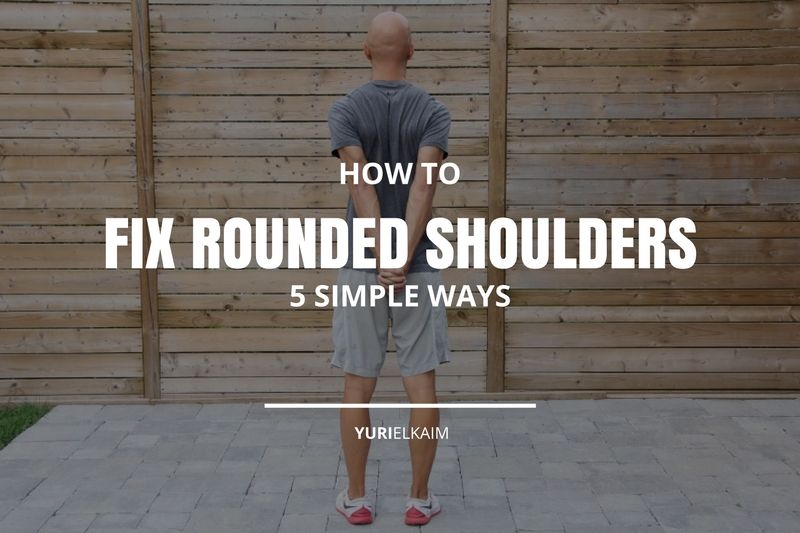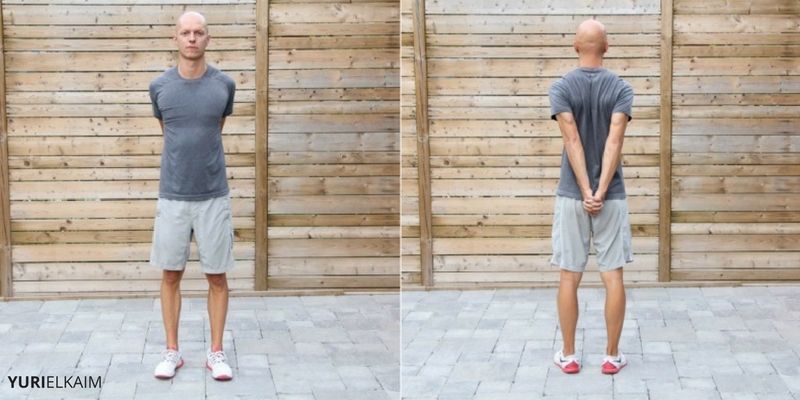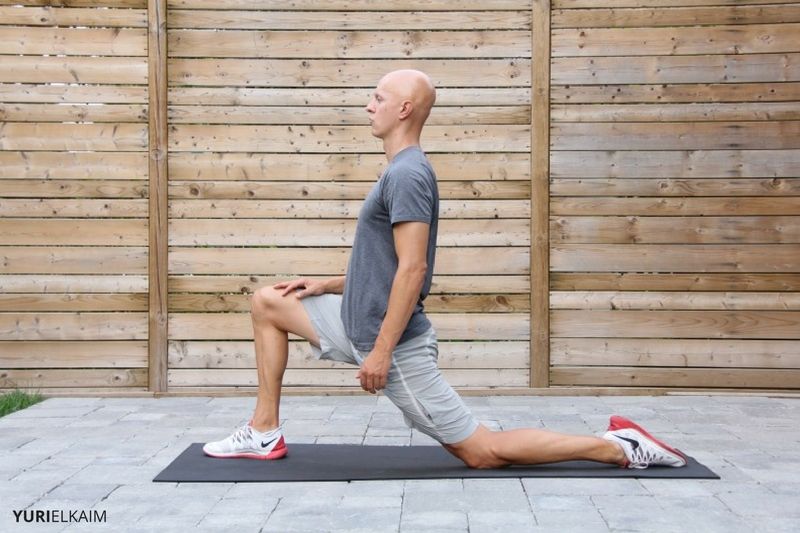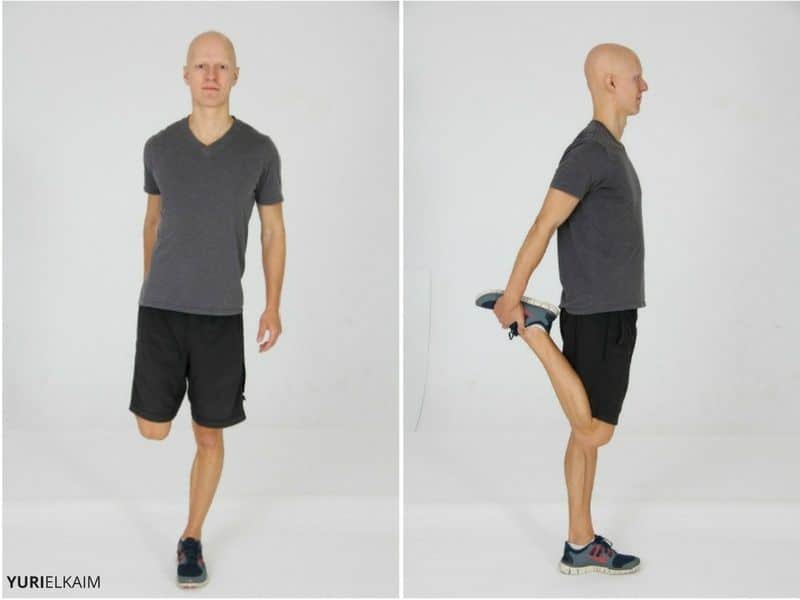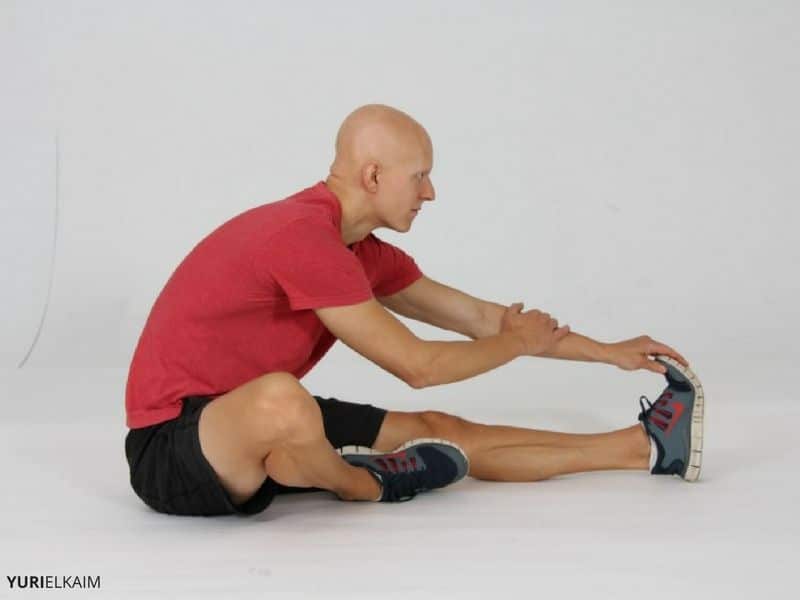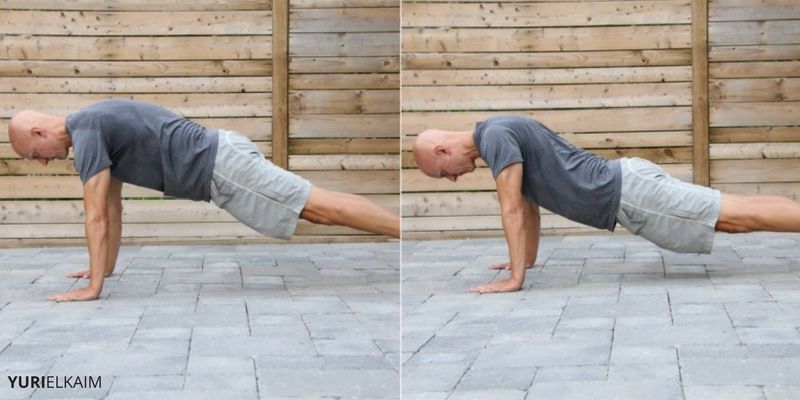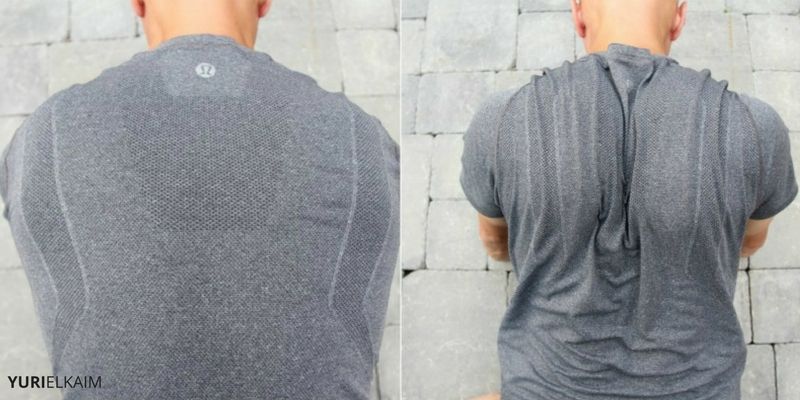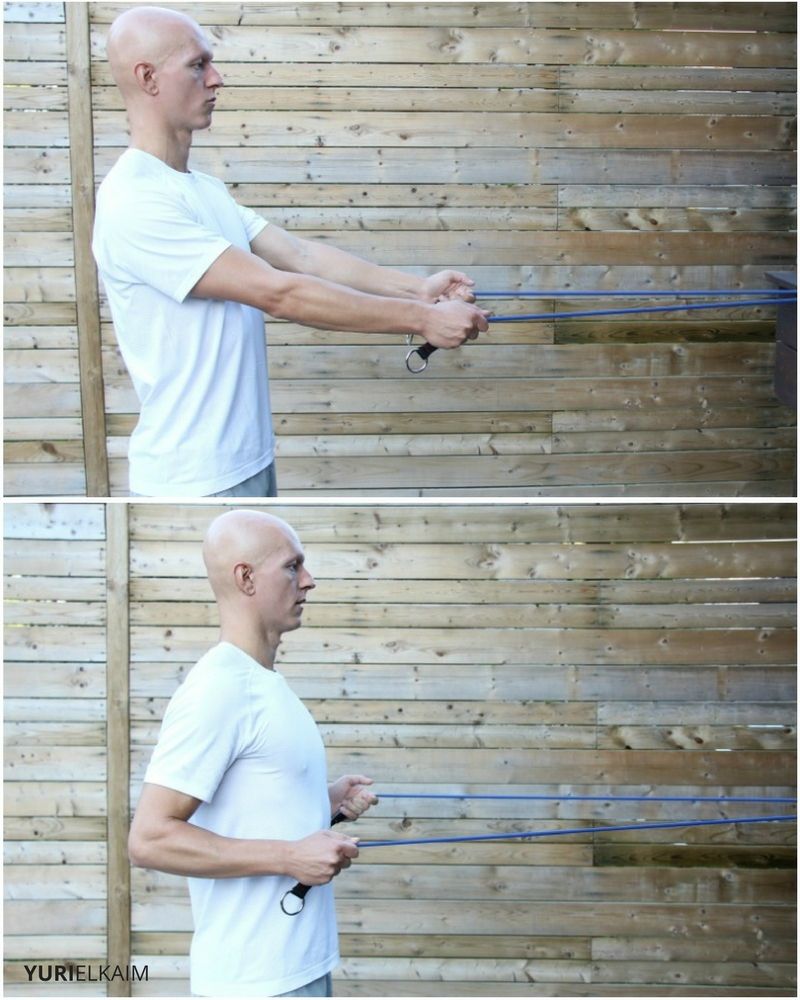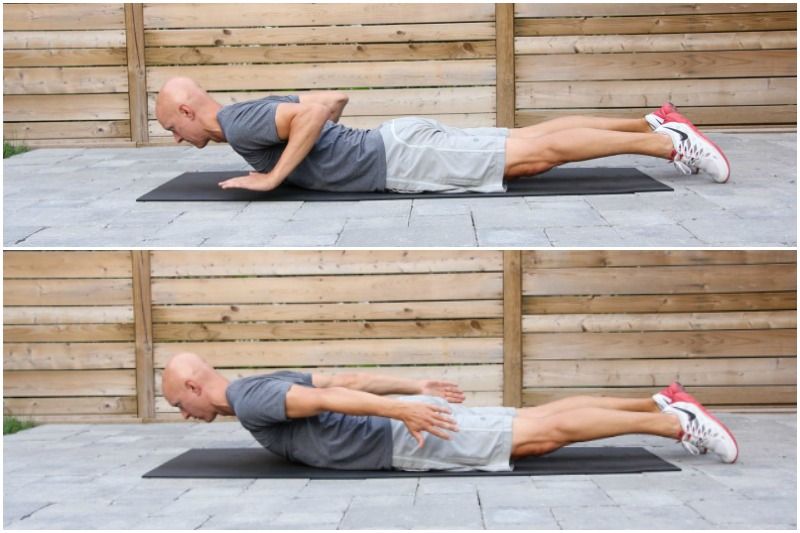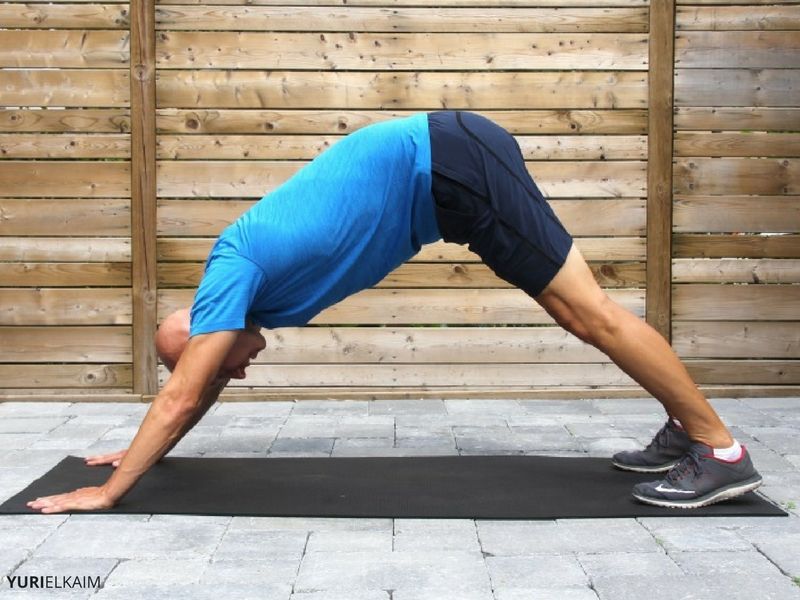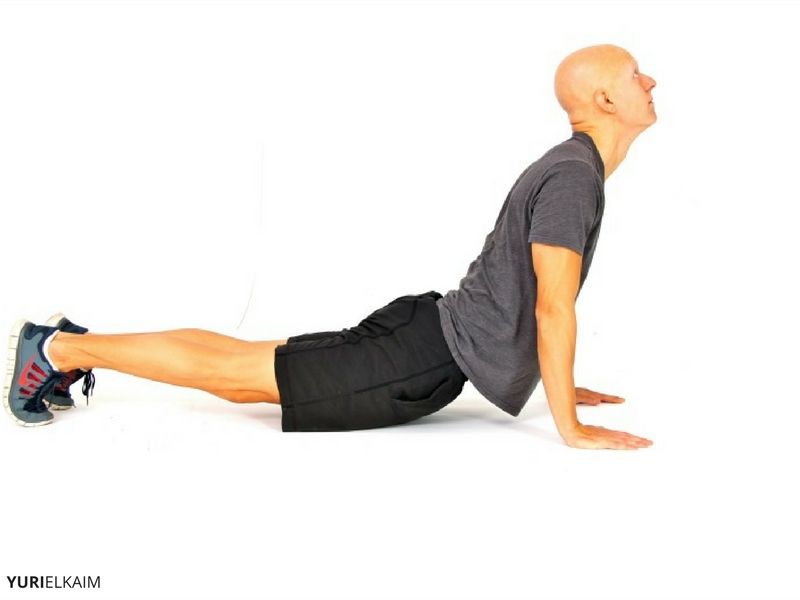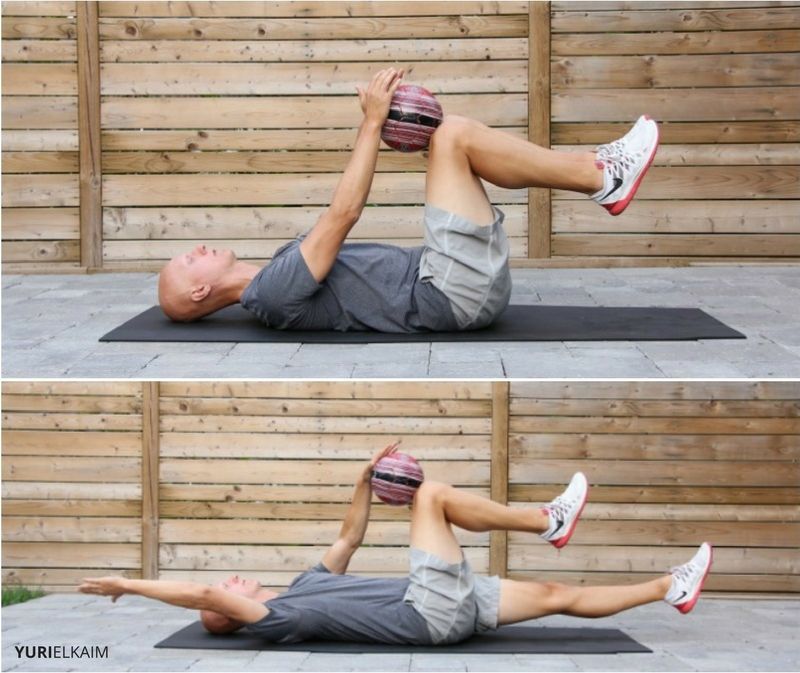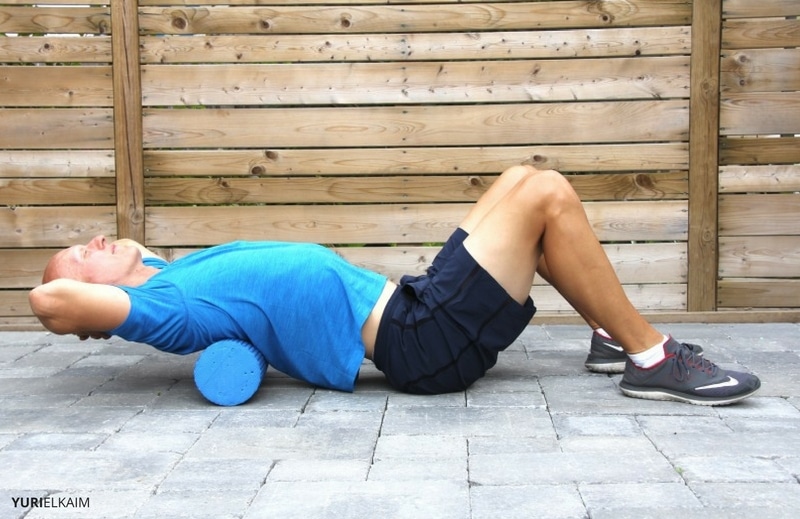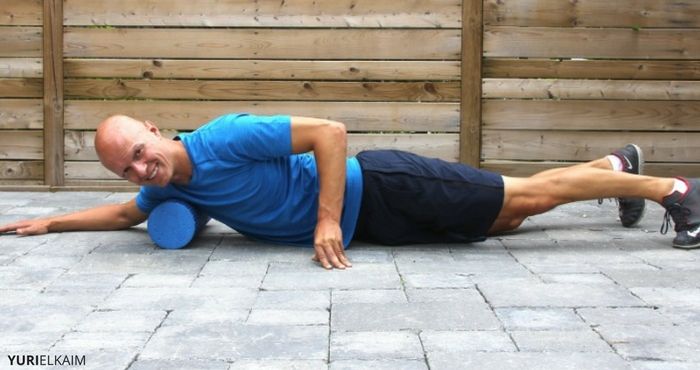In this article
Desks, chairs, and computers are waging war against our bodies.
They launch daily attacks on our ligaments and muscles.
How?
It’s our modern lifestyle. When you spend hours in front of a computer, it’s nearly impossible not to slump, with our shoulders, necks, and heads slouching forward.
The good news is that we can defeat our workstations with a few simple tactics.
Why and How to Fix Rounded Shoulders
The thing about rounded shoulders and bad posture is that they creep up on you. One day you’re sitting tall at your desk, and a year later you find yourself slouching at the dinner table.
What happened?
Rounding of the shoulders is caused by continuous bad posture. This is often brought on by spending hours sitting at a desk, which results in muscular imbalances.
Specifically, when we slouch, the shoulders roll forward and the neck follows suit, craning ahead of our bodies. This shortens the muscles of the chest and weakens the scapular (upper back) muscles, setting the stage for a hunchback appearance.
Correcting these imbalances has a host of benefits. Aside from the obvious effect on appearance, research has shown that correcting posture can also affect on our mood, confidence levels, and can even help us feel less fearful (1).
Thankfully, rounded shoulders can be corrected through various methods below that are easy to do at home or in the office.
1. Stretching
Stretching should be first on anyone’s list looking to fix forward shoulders. The following stretches relieve tightness in the chest, hip flexors, hamstrings, and quads, allowing the body to sit upright instead of rounding forward.
Aim to practice these stretches for 20 to 30 seconds several times a day.
Hand Clasp Stretch
The hand clasp stretch is one of the simplest stretches you can do to open your chest and stretch your shoulders. Here we want to concentrate on the pulling shoulders back and down, while avoiding letting the neck thrust forward.
Begin standing, hands by your sides. Reach behind you and clasp both hands together. Gently pull your shoulders back until you feel your chest open, along with a deep stretch through the front of the shoulders.
Hip Flexor Stretch
Along with tight chest and shoulders muscles, stiff hip flexors can cause the body to round forward even further. Loosening these will make it easier to stand tall and counteract the stiffening effects of sitting all day.
Try this simple hip flexor stretch you can do anywhere:
Begin standing in a lunge position, right foot forward. Lower your left knee to the ground and push your hips forward slightly until you feel a stretch deep in your hamstrings. To make the stretch even deeper, tighten the muscles of your left glute. Hold for 20 to 30 seconds, then switch legs.
Quad Stretch
Since the quadriceps are on the front side of the body, they are prone to shortening and stiffening just like the chest muscles. Stretching these is doubly important if you spend most of your day at a computer.
For a simple quad stretch, stand and grasp one foot with your hand behind you. Gently pull upward until you feel a slight stretch in the front of your leg.
Single Leg Hamstring Stretch
Sitting too often can cause the hamstring muscle to shorten over time. This shortening can cause the spine to round, since the hamstrings are attached to the pelvis.
For a simple hamstring stretch, begin sitting with one leg stretched out in front of you, the other leg bent with its foot near your thigh/knee. Keeping the knee of your extended leg soft, bend from your hip so that your chest drops down toward your thigh, hand reaching toward your foot.
Hold for 20 to 30 seconds before repeating on the other side.
2. Back Exercises
As we discussed earlier, rounded shoulders stem from weak upper back and core muscles, shortened chest muscles, stiff hamstrings, and tight hip flexors.
While stretching opens these stiff areas, back exercises like those here help strengthen the scapulae muscles, which are responsible for pulling the shoulders back and down.
Perform these exercises several times a week in addition to stretching.
Scapular Push-ups
This push-up variation directly targets the upper back muscles responsible for holding our shoulders in the correct position.
Mobdro app (APK) download to watch premium online TV. www.mobdro.com is the official site but you find every info of mobdro in this blog even review. Mobdro download for Android & PC/Laptop with Mobdro.APK Install. Online TV, Sports, Music, Movies, and Live TV options are explained.
Begin in a push-up position, making sure your shoulders aren’t shrugged and that your body is in a straight line from head to toe.
Now squeeze your shoulder blades together, then return to your starting position. This is a very small movement, unlike a regular pushup where you lower fully to the ground.
Return to your starting position and repeat for 5-10 reps.
Wall Slides
Wall slides also target the upper back muscles, and work to strengthen the shoulders so they can return to correct posture.
Begin standing with your back against a wall. Keep your tailbone, lower back, upper back, and head against the wall while slightly moving your feet out. Tuck your chin in and flatten the backs of your arms against the wall, keeping a 90-degree angle in your elbows.
Hold for 30 to 60 seconds. Alternatively, your can slowly move your arms up and down against the wall to further engage the upper back muscles.
Scapular Retraction with Bands
Using a band to perform a scapular retraction increases engagement of the scapulae muscles. Many find this exercises slightly challenging at first, so start with a light band if you’re a beginner.
Loop an exercise band around a sturdy object, such as a bed post, at waist level. Keeping your elbows at 90 degrees by your sides, pull the band to draw your shoulder blades together.
Return to your starting position and repeat for 8 to 12 reps.
3. Yoga
Yoga postures require a unique combination of strength and flexibility. This makes several poses ideal for posture-correction, as they essentially lengthen trouble areas while strengthening their weakened counterparts.
Cobra Pose
For instance, cobra not only acts as a chest opener, but also engages the upper and lower back. This helps support the spine and encourages the shoulder blades to remain back and down.
To perform cobra, lie on your stomach on the floor. Engaging your back muscles, push off the floor with your hands, elbows aligned under your shoulders.
Focus on opening your shoulders, tilting your head back slightly. Hold for 20 to 30 seconds.
Downward Dog
Downward dog is not only an amazing opener for the chest and hamstrings, but also strengthens the front of the shoulders and lengthens the spine.
Beginning in a tabletop position, with hands directly underneath your shoulders, straighten your legs and lift your hips toward the ceiling. Keep your head and neck aligned with your spine with reaching your heels toward the floor.
Hold for 20 to 30 seconds.
Upward Dog
Upward dog is similar to cobra pose, except the hips leave the floor and the arms straighten fully. This stretches the chest and abdominals, while also engaging the lower back and shoulders.
Begin lying on your stomach on the floor. Engage your back muscles, keeping the tops of your feet flat on the floor, and push up until your arms are straightened.
Your hips will hover slightly off the floor and you’ll feel a deep stretch in your chest and shoulders.
Hold for 20 to 30 seconds. You can also pair this with downward dog, transitioning from one to the other in one smooth movement.
4. Core Exercises
Sometimes slouching can stem from having a weak core.
Our core includes much more than the “six-pack” muscles we see in the mirror. In fact, our core can be viewed as a corset of muscle, wrapping in several layers around our entire torso.
This corset’s first priority is keeping the spine in proper alignment. When it becomes weak, the spine becomes vulnerable to slouching due to lack of support. That’s why one of the best fitness tips is to include core strengthening exercises regularly in your workouts.
Strengthening the core muscles with these exercises, which also involve the lower back, will help to pull and set the spine back into its proper position.
Plank
Almost no other exercise beats planks when it comes to total core engagement (2).
To perform the plank, get into pushup position, with your arms directly under your shoulders and body in a straight line from head to toe.
Alternatively, you can do a plank on your elbows. Just remember to always keep your back straight, avoiding letting your hips sink toward the floor.
Hold for 30 to 60 seconds.
Medicine Ball Deadbugs
The medicine ball dead bug strengthens your entire core, including the stabilizer muscles deep beneath your abdominals responsible for holding your spine in place.
Begin lying on the floor, legs and arms extended toward the sky holding a 3 to 5 lb medicine ball (or kettlebell or dumbbell if you don’t have one). Engaging your core muscles, lower your right leg to just above the ground.
Draw your leg back up, then lower the opposite leg, keeping your hands over your head with the ball at all times.
Repeat for 8 to 10 reps on each leg.
5. Foam Rolling
While you may think foam rolling is reserved for athletes with sore muscles, think again! Above all, foam rolling is excellent for breaking up tightness in the muscles – a major contributor to rounded shoulders.
Not only that, foam rolling has been shown to also improve range of motion and circulation (3).
This is great news for office workers who spend the majority of their days sitting, as this can reduce circulation and flexibility.
Try to foam roll 2 to 3 times a week for maximum results.
Upper Back Roll
Lie on your back with a foam roller positioned under your upper back. Cross your hands over your chest and roll slowly back and forth along your upper back, pausing at places of tension. Hold at those spots for 20 to 30 seconds, or until the tension diminishes.
Chest Roll
Lie facing the floor, with a foam ball or roller under your chest beside the shoulder joint. Move your arm up and down, feeling the ball hit different points of tension in your chest. You can also rock forward and backward very slightly to reach different areas of the chest.
When you find a tender spot, try to remain on it for 20 to 30 seconds, or until the tension diminishes.
Repeat on the other side.
Win the War with Consistency
Now that you know the formula for how to fix rounded shoulders, remember that it can take time to correct them. Just as rounding them didn’t happen overnight, it will likely take some time to correct them.
However, with these tools in your daily arsenal, the desk doesn’t stand a chance in defeating your posture.
Feeling Stiff and Sore?
Borrow the strategies athletes use … and feel more limber, fast!
Steal my 11 best workout recovery strategies to improve your flexibility, reduce stiffness, and feel good again.
Click the banner below and download my Workout Recovery program – for FREE!

